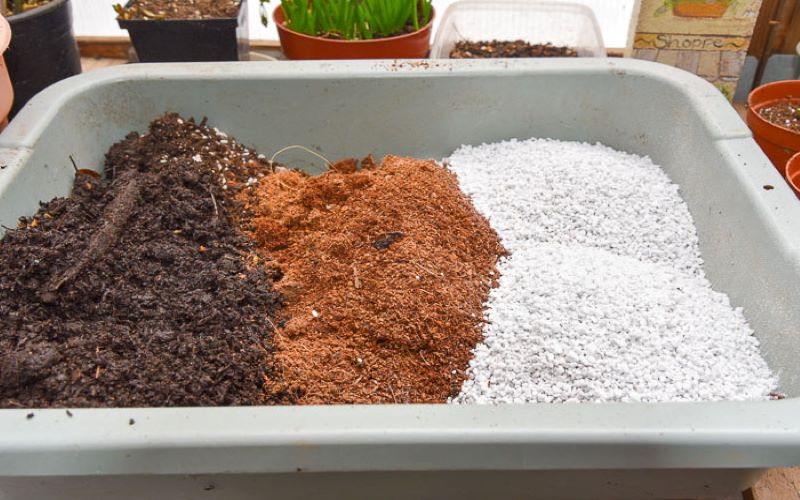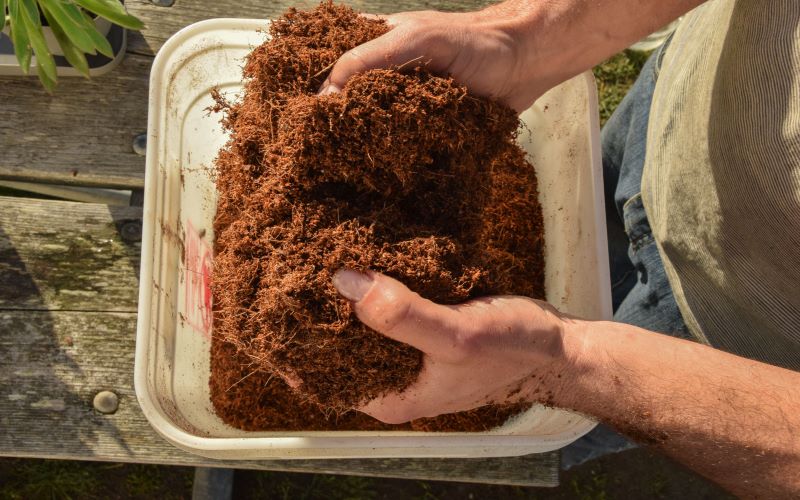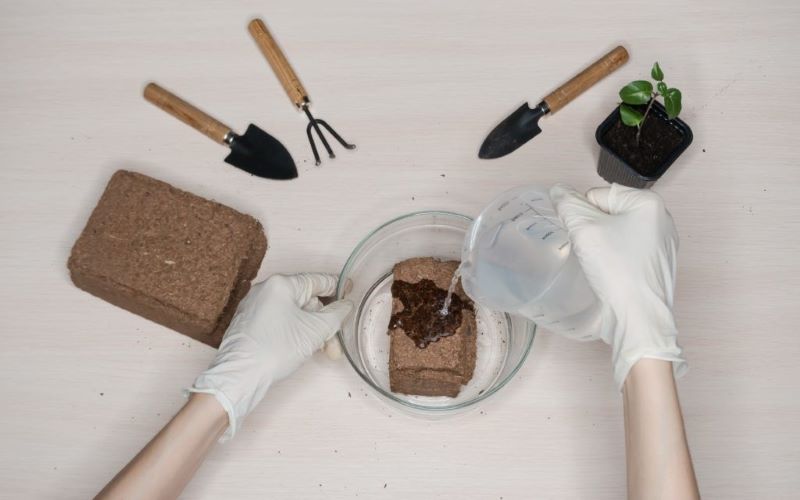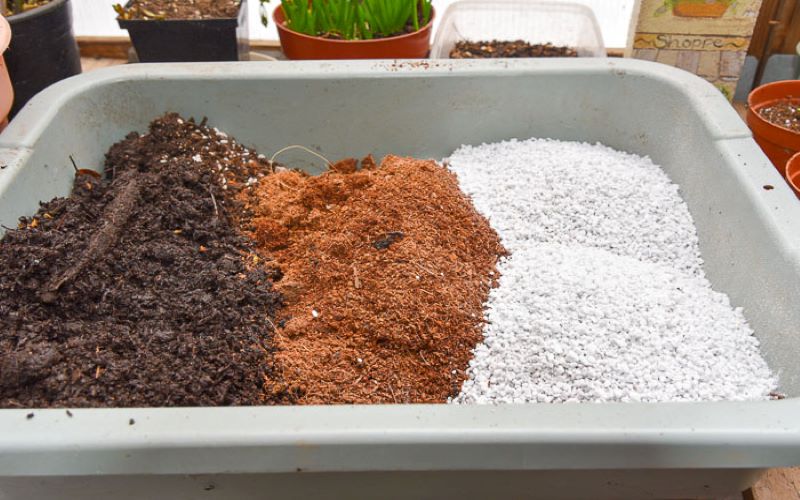The recipe of coconut coir potting mix: coir, compost, perlite (or vermiculite)
The recipe of coconut coir potting mix: coir, compost, perlite (or vermiculite)

Coconut coir is a great alternative potting mix growing media for preparing potting for peat moss. Although both peat moss and coco coir are interchangeable, coconut coir is a more sustainable option to peat moss. So what are the benefits of coco coir? How to use it more effectively? How to make the coconut coir potting mix at home to grow your seedlings and plants healthily? Through the article below, Tropicoco will help you answer these problems.
Why should we use coconut coir?

The coco coir is typically biodegradable, but this ability of coir is a little bit slow. Coco coir’s biodegrade is slower than that of the regular peat moss and the other organic matters.Coco coir is a naturally weed-free and soil-free kind of product. It has a really good smell. Besides, as a soil amendment, coir helps add organic substances which enhances soil structure, aerates the soil and supports the healthy growth of roots.
Moreover, coir helps enhance the soil capacity of retaining water. It acts as a sponge that can retain water well in the root system so that the plants always have enough water to use if necessary. Among most of the soil amendments, coco coir nearly has the greatest water-retaining capacity, which it can retain up to 7-10 times its weight.
When retaining water, it will also get rid of the amount of excess water so that the plants do not become over-watering. Although coir does not have any remarkable nutrient value of its own, coco coir also helps the soil retain enough nutrients for the plants to use if necessary.
Rehydrate coir bricks before making coconut coir potting mix

You need to use a kind of wide container, such as a cart, to do this process. Then you put the coir bricks into the container and add some fresh water. If you can, please use the rain water to help you save water for your household. You add water to the brick gradually and let the brick absorb all the water to expand up to 10 times its volume.
So one the coco coir brick has taken in all the water, you will see how easily it breaks down into this coconut coir that you can use for your growing media. If you notice that some part of the brick is still dry, you can just keep the soft part aside. With the dry rest of coir brick, you just add some more water to let it break down
Once the coconut coir has totally expanded, you can store them in big bags to use them easily in the future.
Coconut coir potting mix recipe

However, please remember that the coconut coir potting mix is the mix that does not have any nutrients of its own, so the compost addition will help provide some nutrients. When you grow your seedlings or plants in this potting mix, you need to add some nourishment. You can use either an organic fertilizer or a well-balanced fertilizer to add to the potting mix. Besides, you can use a slow release fertilizer as granules in your potting mix. If you plan to use liquid fertilizer like seaweed or fish, you can leave that out.
If you do not have perlite available, you can substitute perlite with vermiculite. Vermiculite is the common name for hydrated laminar magnesium-aluminum-iron silicate. You can use vermiculite to promote seed germination and enhance soil structure. This is because of its aeration and water-retaining elements. Vermiculite is a very lightweight material. It does not rot, and helps soil structure improve through soil aeration and increase the ability to retain water and nutrients. With this coconut coir potting mix, you can use many kinds of plants very effectively, especially some spinach seedlings.
Conclusion
Tropicoco has shown you the information about coconut coir potting mix and its recipe to manufacture. This kind of potting mix contains compost, coconut coir, and perlite (or vermiculite) that helps itself have many more advantages. For instance, it will retain water well, retain nutrients greatly, and improve the capacity of your plants. Therefore, it will be a great potting mix for you to use in gardening. If you want to look for this product, as well as the related products, make sure to contact Tropicoco right now.
Contact information
Tropicoco – The best substrate
Address: No.20 Ngan Long Villa, Nguyen Huu Tho street, Nha Be dist, Ho Chi Minh City
Email: giathe@tropical.vn
Hotline: +84 983230879
Open Hours: Mon-Sat: 8.00AM-5.00PM; Sunday: Closed

